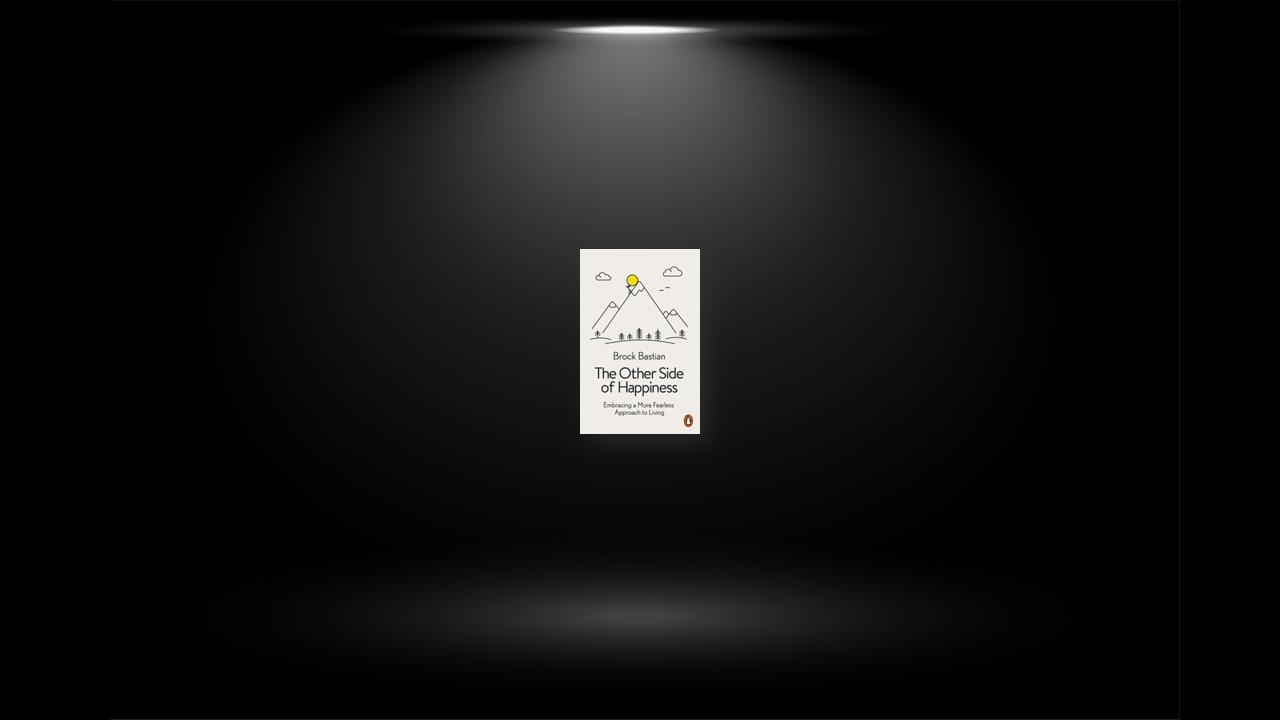Have We Reached Peak Comfort?
Seeking to avoid unpleasant experiences only tends to make them worse. Rather, confronting, accepting and even approaching them is a better management strategy. Fortunately, we have good reason to approach pain on the front foot; such experiences are in fact critical for our happiness. A life without any discomfort at all would be quite a horrible existence. This realization motivated Aldous Huxley to write his book Brave New World in 1931. He imagined a world in which people had the capacity to eradicate their negative experiences by taking ‘soma’ (a substance that is eerily similar to modern-day antidepressant medication). Those living in this brave new world could eradicate all their discomfort, yet it was exactly this capacity that Huxley believed made the society he wrote about dystopian. He believed such an existence would have been freakishly banal and bereft of any real meaning. A life free of any suffering at all would be without distinction, without edges, and without variation. A world without pain would be torturous indeed.
If you stop to consider the happiest moments in your life, they are usually experienced on a knife-edge between pleasure and pain. Whether it be finding your true love, holding your newborn baby for the first time, or a great professional achievement, all of these moments of happiness are couched in the potential for suffering, loss or failure. Love is a powerful experience because it makes us vulnerable; grand achievements are only grand because those who achieve them risk humiliation; and holding your newborn in your arms for the first time occurs in the context of great insecurity, anxiety and pain. If we eradicate the possibility of pain, loss or failure, we eradicate joy and strip these experiences of any kind of lasting meaning.
Getting Tough
Biological systems become stronger when exposed to stress. Immunization is a good example. By exposing the body to controlled doses of a given bacterium we trigger the immune system into building a more effective response. This in turn leads to a stronger immune defence system and a reduced likelihood of infection when future contact with that bacteria occurs. In effect the immune system responds to a moderate level of stress (immunization) by becoming stronger and developing better systems to cope with more significant levels of stress (potential infection) in the future.
When the biological system has not built sufficient defences, and infection takes hold, we are forced to turn to one of the greatest life-saving inventions in human history – antibiotics. But there is a downside; antibiotics strengthen bacteria, not the biological systems they were designed to protect. The more antibiotics we use, the more antibiotic-resistant strains of bacteria we create. Each bacterium that survives a dose of antibiotics adapts and becomes stronger. Furthermore, the more that we rely on antibiotics to kill these bacteria, the more we prevent our immune system from building its own defence systems against infection. Indeed, in our attempts to kill bacteria we are creating ‘superbugs’, and have put humanity on the verge of the potential for an outbreak of untreatable disease.
Exposure to stress (such as pain and trauma) can be a catalyst for humans to develop a stronger and more resilient response to future stress; it can literally build ‘psychological immunity’. The key to healthy psychological functioning is exposure. If we want to be happy, we cannot afford to hide from our challenges and surround ourselves in protective layers of comfort. To achieve emotional stability and the capacity to handle challenges when they arise, we may be well advised to occasionally seek out discomfort and to take ourselves outside our proverbial comfort zones more often than we do.
Connecting With Others
Pain motivates people to help each other, an effect that can thus spread and enrich communities. Whether it be observers of extreme rituals, or those who look on when others are affected by disaster and tragedy, these negative experiences trigger a desire to forget oneself and help those who have been affected. Moreover, this pro-social inclination becomes generalized; it spreads even to the non-affected, motivating people to become more accepting, more neighbourly and more caring.
While we have known for some time that enduring hardships can enhance performance – a fact routinely used in military training – the possibility that through creating a more supportive group environment such experiences can enhance other qualities, such as creativity, is unprecedented. This suggests that while luxurious corporate retreats might be good for morale, arduous corporate training exercises might be good for problem solving, creativity and a sense of unity.
The authors’ findings also fit with the belief that staying within our comfort zone is rarely a good strategy to foster creative outputs. We need to endure the challenge of sometimes stressful, novel and potentially threatening environments to foster true originality.
Finding Focus
Together the evidence suggests that pain can capture attention and increase awareness of our immediate sensory experience – it connects us to the world around us. Furthermore, our increased awareness is not limited to the experience of pain. When it ceases, this awareness can make other experiences more intense and more enjoyable. Still, surely there are better ways to achieve this! Why would I choose the shock of a cold shower, the exhaustion of a hard workout, or the fear felt when speaking in public over other practices (such as mindfulness) that can also increase awareness?
One reason to choose these uncomfortable experiences is that something like meditating is difficult and takes time and practice. Our minds tend to be like badly behaved children racing from one thought to another. This is why many people spend their time and money on classes or books teaching them meditation or mindfulness techniques – yet even with this help, achieving voluntary control over our attention can be fraught with failure. If you have ever tried meditating you will know it can be a very frustrating experience.
If you stop to reflect on moments you experience after a hard workout at the gym or a rigorous jog, they are moments of awareness. The same goes for experiences of fear, such as when you are facing a personal challenge you are especially anxious about – perhaps public speaking. In these moments we are focused, we are present, and we are engaged with an intensity rarely achieved otherwise. Other less desirable negative events, such as rejection, failure or an injury, may also provide these kinds of experiences. Of course, we would not purposely seek these out, as there are other less damaging ways in which we can achieve the same outcomes. Still, even when we do not choose to suffer, we will still experience this increased clarity of awareness, a benefit we may do well to remember.
When we face our limits, when we push ourselves beyond our comfort zone and to the edge of what it is we can handle, we become more connected to the moment. These challenges focus our minds, sharpen our awareness, and heighten our senses, ensuring that our minds are not preoccupied with unnecessary worries and concerns. It is in these moments that we transcend ourselves, finding a sense of clarity rarely experienced outside intense meditation.


